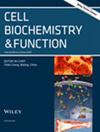This study focuses on identifying active compounds within Chenopodium ambrosioides extracts and fractions, with a specific emphasis on their potential analgesic and antidiabetic properties. The motivation arises from the reported therapeutic effects of the plant and the desire to pinpoint the compounds responsible for these benefits. Gas chromatography–mass spectrometry spectrophotometric analysis was employed to characterize chemical constituents in the aqueous extracts (infused aqueous extract and macerated aqueous extract) and fractions (cyclohexane fraction, ethyl acetate fraction, butanol fraction, remaining aqueous fraction) of C. ambrosioides. Animal models were used to examine the analgesic activity, while α-glucosidase and α-amylase enzyme assays were used to investigate the antidiabetic effect. Throughout the investigation, several chemical families were found, including phenolic compounds, alcohols, acids, terpenes, steroids, and others. Trans-ascaridol glycol, palmitic acid, phenol, octadecadienoic acid, isoascaridol, eicosanoic acid, 2-methoxy-4-vinyl phenol, mexiletine, and thymol were among the significant chemicals found. At a dose of 500 mg/m, starting with α-amylase inhibition, among the extracts, EAF (59 ± 0.7 μg/mL) showed the highest potency, followed by FA (129 ± 0.22 μg/mL), FB (140 ± 0.9 μg/mL), and EAM (178 ± 0.9 μg/mL). Interestingly, EAI demonstrated a relatively weak inhibition (430 ± 0.2 μg/mL), and no result was reported for FCH in this category. Regarding α-glucosidase inhibition, the most potent activity was observed with EAM (1.4 ± 0.7 μg/mL), The other extracts demonstrated varying levels of inhibition, with EAI (4.4 ± 0.5 μg/mL) and EAF (140 ± 1.9 μg/mL) showing moderate activity. FA (25 ± 0.9 μg/mL) and FB (34 ± 0.3 μg/mL) exhibited lower inhibition compared to EAM but still outperformed acarbose in this test. The observed synergistic effects of phenolic compounds in Chenopodium ambrosioides provide insights into the biological properties contributing to its reported analgesic and antidiabetic effects. The study underscores the potential of natural plant products for pharmaceutical applications, especially in enzymatic inhibition. All things considered, these results add to the expanding corpus of information about substances originating from plants and their uses in industry and health.


